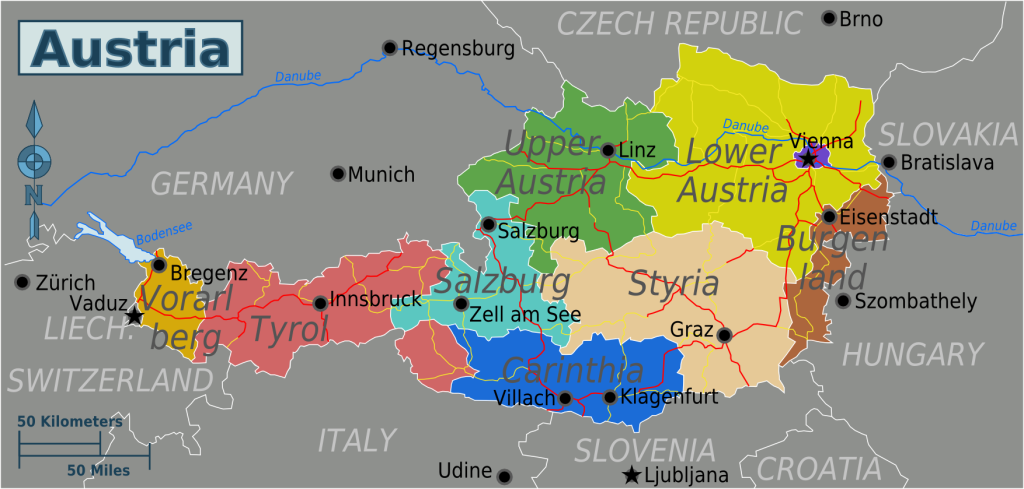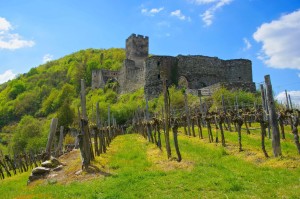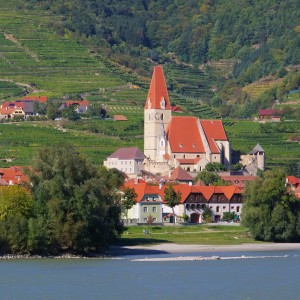 The wine-growing regions of Austria can be a little confusing. Thankfully, the wines are delicious and well-worth the effort to understand.
The wine-growing regions of Austria can be a little confusing. Thankfully, the wines are delicious and well-worth the effort to understand.
Part of the confusion may stem from the fact that four areas that are technically Federal States – Niederösterreich, Burgenland, Steiermark, and Vienna (which, as the capital, plays a double role as both a city as well as a federal state, quite like Washington DC in the US) – all also designated wine quality regions.
Most of Austria’s vineyards are located within these four federal states; the presence of the cold and rugged Austrian Central Alps mountain range makes viticulture quite a challenge in much of the rest of the country.
As any good wine student should know, many of Austria’s designated quality wine regions have been promoted to the highest classification in the land – known as Districtus Austriae Controllatus, or DAC. (The others are referred to as “Weinbaugebiete” or “Quality Wine Regions.) DACs have strict regulations concerning grape varieties, vinification, and wine style, and it is hoped/expected that the other designated regions within the Austrian federal states will, in time, also becomes DACs.
The first Austrian DAC (Weinviertel) was awarded – quite recently – in 2003. And yet, Austria has one of the oldest wine cultures in Europe. In spite of this, what brought fame to Austria’s wines in recent history – most unfortunately – was a few notorious scandals in the 1980s.
While – I am sure – many people in Austria and beyond would just like to forget about what are sometimes referred to as the “Antifreeze Scandals,” the truth is that the scandals led to a tightening of wine standards in Austria and the creation of the Austrian Wine Marketing Board in 1986. As a result of these moves, as well as Austria’s entry into the EU in 1995, Austrian wine has some of the strictest standards in Europe.
Even before the Austrian Wine Marketing Board and the DACs came to be, the wine growers of the Wachau set their own set of standards. Formed in 1983, the Vinea Wachau Nobilis Districtus is a trade association determined to protect the quality and reputation of the wines of the region. Members of the Vinea Wachau, which include almost 90% of the wine producers in the region, must abide by the standards of the organization as well as Austria’s strict wine laws.
The Vinea Wachau has standards for three designated styles of wine, used only for the dry white wines of the region. You’ve probably heard of them:
- Steinfelder: This is the lightest style of the three, as defined by must weight, with a maximum alcohol of 11.5%. Sometimes these wines are lightly sparkling or “spritzig.” Most of these wines are consumed in Austria as a simple, easy drinking wine; they are unlikely to be exported.
-
Federspiel: These “classic” wines are made from riper grapes, with an alcohol of 11–12.5%. These wines are generally rich in aroma and character, while dry and medium-bodied.
- Smaragd: Sometimes defined as “full” or “powerful,” these are the supreme wines of the Wachau. Bottled at a minimum of 12.5% alcohol, these concentrated, full-bodied wines are likely to be suitable for aging.
Here’s where it gets interesting: the Vinea Wachau named these categories after some of the natural delights of the Wachau:
- Steinfelder is a decorative, feathery grass that grows on rocky hillsides. Steinfelder is found only in the Wachau.
- Federspiel is a term related to falconry, historically a favorite sport of Austrian aristocrats. A “federspiel” was a call used to lure the falcon back with its prey. Austria continues to be a world leader in falconry.
- Smaragd means “emerald” and refers to the little green lizards that are often found in the basking in the sunlight in the vineyards of the Wachau.
Doesn’t it make you want to book a trip to the Wachau?


Pingback: Maps Of Austria – George Duarte
Pingback: Map Of Austria – George Duarte